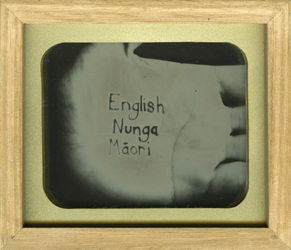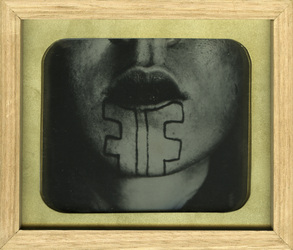Bell’s Theorem
“There is no Aboriginal Art Industry. There is, however, an industry that caters for Aboriginal Art.”
The use of comparing the Western Art Industry to religious sacrifices and is simply a manifestation of European art with Picasso’s inspiration coming from African masks then Australian’s copying Picasso with no acknowledgement to the Africans. These statements are hard to respond to subjectively as I can not relate all to well to this particular matter but I have always enjoyed Richard Bell’s work and can appreciate his non restrictive writing style.
Aboriginal Art is considered a “movement” and as yet has not graduated to ISM status by being “named. I shall do so now. I name Aboriginal ArtHIEROWISM. It is the modern hieroglyphics.
I like his interesting take on hieroglyphics and conforming the “movement” to a typical artistic name with “ism” at the end, clever, yet without ever hearing someone argue it I wouldn’t consider Aboriginal art a movement, its a 40,000 year old tradition, how is that a movement? Honestly.
The number of artists holding the knowledge is declining rapidly and the younger people are reluctant to take up the “Old Ways”
I agree with this problem of a generation gap that Bell has excellently put as not wanting to take up the “old ways” and being heavily influenced by the Western World that older generations do not feel enticed by. Artists such as Nicci Cumptson also touches on these struggles with not allowing this 40,000 year old tradition die off due to the urban way of life.
“That the lack of Aboriginal input into areas of concern is continually overlooked has created the feeling that the culture is being stolen, etc”
The last statement made by Bell I want to touch on is this:
“Urban artists have rejected the ethno-classification of Aboriginal Art to the extent they don’t participate in Aboriginal shows. They see themselves as artists – not as Aboriginal artists”
I understand these artists to an extent with their hesitance to incorporating too much of their heritage into their work for the easy label that will come with such a desire, the label of Aboriginal artist, instead of an artist that just happens to be Aboriginal. Again I can only offer my own opinion on this matter as I am neither Aboriginal nor an artist (yet). All I can condone is my own opinion on the matter and that is, I sympathise yet I don’t agree that any artist should be afraid to be subjected or categorised. I never considered being an artist and being called a Successful Female Artist under 30 or whatever, I just would like to think if it were the case I would just be an artist and if I chose to incorporate femininity into my concepts they would still call me an artist, not a Female Feminist Artists. Or if I chose to discuss what its been like as a member of Generation Y would I be labelled a Young Merging Female Artist.
The term “Aboriginal Art” was created by the European settlers and to the Indigenous community its just art, Dreamtime, story telling, a way of life, not an Art Movement. Which is Bell’s main focus saying Aboriginal Art is a white thing, because it is, we have labelled it, given it a price tag and allowed the art to grow wings and cross the globe in hope of international recognition. That, is an art movement.







